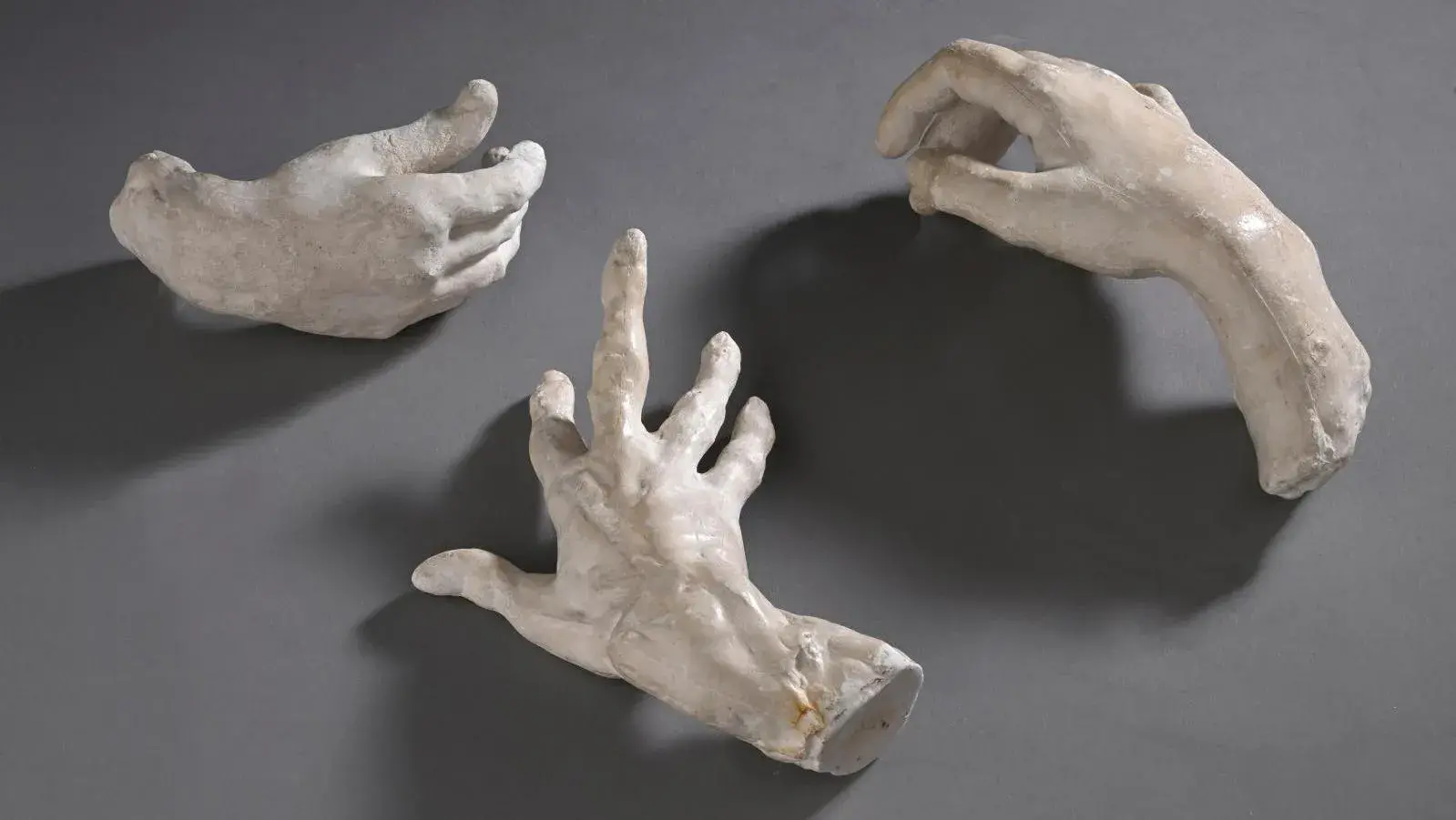A Gift from Auguste Rodin to Eugène Carrière: Hands as a Token of Friendship
Published on

If the hand is Rodin's preferred motif, three plaster studies tell the story of the admiration and friendship between the sculptor and the painter Eugène Carrière. Auguste Rodin (1840-1917), ensemble de trois études de main en plâtre (a group of three studies of hands in plaster, Main droite (Right Hand) n° 3, h. 6, l. 16 cm/h. 2.36, l. 6.2 in, Main droite, majeur levé et poignet cassé (Right Hand, Middle Finger Raised and Wrist Broken), 15 x 10.7 x 5 cm/5.9 x 4.21 x 1.96 in, Main droite féminine, doigts semi-repliés, annuaire levé, Female Right Hand, Fingers Semi-Folded, Ring Finger Raised), h. 5.5, l. 11.5 cm/2.16 x 4.52 in, the









